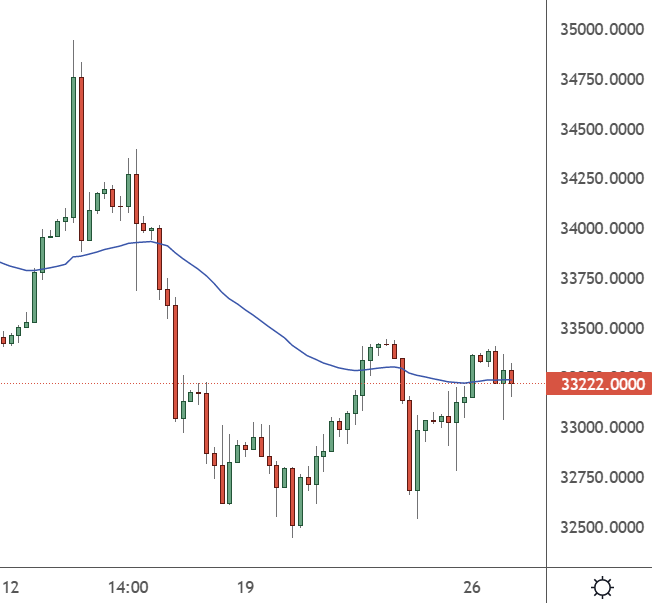The Dow Jones was mixed on Tuesday after it was announced that China will drop the need for quarantine in January for visitors.
Markets have been anticipating a lifting of China’s strict policies and started with a solid overnight rally of 0.75%. The stock index then surrendered some of those gains to finish up around 0.20%.
US30 – 4H Chart

On the 4-hour chart, US30 still has the potential to advance above the 33,400 level and onto further gains. The 50-moving average is providing potential support for that move.
Officials said China will scrap its quarantine requirement for travellers from 8 January, marking the last major shift from the country’s zero-Covid policy. After almost three years of shut borders, the government will reopen for those with work and study visas or seeking to visit family. Travel overseas for Chinese citizens will also become more accessible, and citizens have already rushed to book their travels.
The latest development is positive for financial markets despite continued cases in China. The price of oil has jumped on expected demand increase. At the same time, China’s GDP outlook should improve and help to lift the expectations for the Asian region. On Monday, the National Health Commission announced that Covid would be formally downgraded to a Class B infectious disease.
Stocks came under pressure from higher global bond yields after the 10-year T-note yield rose to a 6-week high of 3.858%, and the 10-year German bond yield jumped to an 11-year high of 2.534%. US casino operators with exposure to Macau rallied with the China news. Mining stocks also rose, with copper prices hitting a 6-week high on optimism that industrial metals demand will lift.
Tuesday’s US economic data was primarily bearish for stocks, with US inventory data showing November wholesale inventories rose up 1.0% for the month, above expectations of +0.3%. Also, November retail inventories unexpectedly rose 0.1% every month, above expectations for a -0.1% decline. The December Dallas Fed manufacturing outlook was weaker, falling from -4.4 to -18.8, weaker than expectations of an increase to -13.5.
The markets may have to wait until the New Year before seeing the real Q1 trend taking hold with more robust trading volumes.


